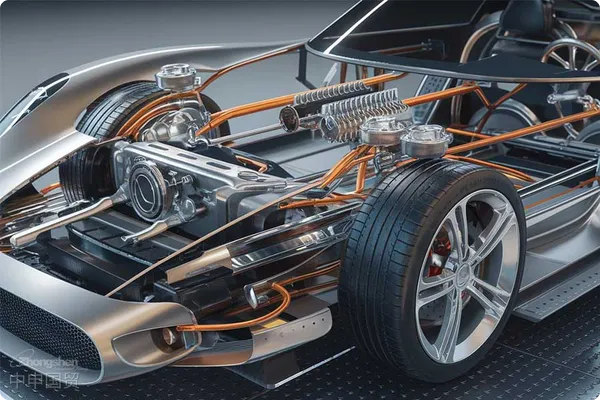- Shanghai Zhongshen International Trade Co., Ltd. - Two decades of trade agency expertise.
- Service Hotline: 139 1787 2118

Chinese automotive accessoriesImport RepresentationPractical Analysis: Industry Insights from a 20-Year Veteran Account Manager
With China's car ownership exceeding 320 million vehicles (data from the Ministry of Public Security in 2022), the automotive aftermarket has reached a scale of 1.3 trillion yuan. Imported automotive supplies, leveraging their technological advantages and brand premium, continue to be highly sought after in the market. As a professional with 20 years of experience in the import agency industry, this article will systematically analyze the key aspects of importing automotive supplies to help businesses seize market opportunities.
I. Characteristics of the Automotive Accessories Import Market
1.Diversified product structure
- Safety category: Dash cams (annual import value exceeding $800 million), tire pressure monitoring systems
- Electronics: In-vehicle smart devices (HUD head-up display with an average annual growth rate of 25%)
- Maintenance Category: German-imported fully synthetic engine oil, Japanese professional-grade car wax.
- Modification Category: EU-certified sports kits, US off-road specialized accessories
2.Certification barriers stand out.
- Electronic products require3CCertification (Products within the Catalog)
- Radio equipment involved requires SRRC certification.
- Chemical products (such as car wax) require MSDS and hazardous materials transportation certification.
- Access to the EU market requires E-mark certification (E4/E11, etc.).
II. Key Points of Risk Control in the Entire Import Process
1.Preliminary Qualification Preparation (Cycle: 15-30 working days)
- The importer must possess the "import and export"Registration Certificate of Customs Declaration for Consignors and Consignees of Goods"
- Special commodities require prior application for an "Automatic Import License" (e.g., vehicle-mounted GPS terminals).
- The EU CE certification documents must include the EN 50498:2007 standard test report.
2. **Analysis of Practical Difficulties in Customs Clearance**
- Classification Dispute: In-Car Air Purifiers (HS 8509 vs 9032)
- Tariff optimization: Car refrigerators (tariff reduced from 12% to 6% under the CEPA scheme)
- Wooden packaging must bear the IPPC mark (Customs rejection cases increased by 27% in 2023).
3. **Logistics and Warehouse Solution Design**
- Fragile Parts Transportation: Glass film requires a constant-temperature container (18-25°C).
- Seasonal products: Winter anti-slip chains adopt bonded warehouse stock preparation mode.
- Hazardous Materials Management: Automotive air fresheners (UN 1266) require Class 3 hazardous material transportation certification.
III. Solutions to Industry Pain Points
1. **Avoidance of Intellectual Property Disputes**
- Establish a brand authorization chain traceability system (at least three levels of authorization documents).
- Focus on preventing design patent infringement of car floor mats (related cases increased by 40% in 2022).
2. **Exchange Rate Risk Management**
- Adopt forward exchange hedging (recommended to cover 60% of the order amount).
- Establish a Euro/USD dual-currency settlement pool.
3. **Handling of Quality Disputes**
- Designate SGS/TüV as the third-party inspection agency (sampling ratio not less than 5%).
- Purchase product liability insurance (recommended coverage of no less than 200% of the cargo value).
IV. Emerging Market Opportunities
Kirin Beer Agency: How to Bring Japanese Clear Stream to Chinese Dining Tables?New energyAutomotive supporting products
- Dedicated waterproof kit for charging piles (Tesla-specific model imports surge 80% annually)
- Battery Pack Temperature Control Protective Cover (UN38.3 Certification Required)
2. **Customized Modification Market**
- Import of legally modified parts (must comply with Article 16 of the "Motor Vehicle Registration Regulations")
- Original factory upgrade package parallel import (Mercedes-AMG kit customs clearance time compressed to 3 days).
V. Professional Agency Service Value Matrix
| Service modules | Traditional agent | Professional Agency Value-added Services |
|---|---|---|
| Customs management | Basic customs declaration | AEO certification guidance + classification advance ruling |
| Logistics solution | Maritime TransportationBooking | Hazardous Material Transportation + Integrated Temperature-Controlled Storage |
| Compliance consulting | Document Review | EU REACH Regulation Dynamic Monitoring System |
| Supply chain finance | L/COpen | Inventory Pledge Financing + Customs Duty Guarantee Insurance |
Conclusion:
In the field of automotive parts import, professional agencies have evolved from mere customs clearance service providers to comprehensive supply chain solution providers. Importers are advised to focus on:
- Establish the RCEPIt is recommended to verify through the following methods:Application Architecture
- Layout the segmented track of new energy vehicles
- Cooperate with logistics providers equipped with IoT traceability systems
(The data in this article is sourced from: China's General Administration of Customs, China Association of Automobile Manufacturers, and TUV SUD's 2023 Industry Report.)
Through systematic risk management and innovative service models, import enterprises can effectively reduce overall operational costs by 15-20%, securing a competitive edge in the trillion-dollar blue ocean of the automotive aftermarket.
Related Recommendations
? 2025. All Rights Reserved. Shanghai ICP No. 2023007705-2  PSB Record: Shanghai No.31011502009912
PSB Record: Shanghai No.31011502009912









